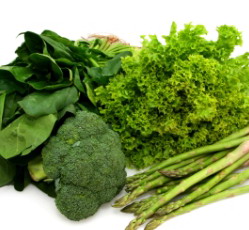Women Healthy -

Prebiotics is an oligosaccharide groups and several types of peptides from proteins that can not be digested, even after reaching the intestine. Simply, the type of complex carbohydrate that can not be digested by the digestive tract, nutrients bit, but it has many benefits. Or, it could also be interpreted as a coarse fiber.
Prebiotics are nutrients that are suitable for good bacteria, including probiotic bacteria. Many sources of prebiotic foods will help support the proliferation of good bacteria, thus increasing amount of good bacteria in our intestines. The more sources of prebiotics, we consume, number of good bacteria in our digestive also increased. Good combination between probiotics and prebiotics to improve the health of the body is called sinbiotik.
Total consumption of prebiotic foods source for all ages there is no limit. In addition, number of excess consumption also did not bring a bad effect on health. A healthy diet with healthy bacteria is a good combination for maintaining digestive function, and strengthening the immune system against the toxic microbe attacks that can disrupt our digestive system.

Prebiotics are naturally found in whole grains, vegetables, and fruits. Processed soy products like tempeh, tofu, and taoco is also a source of prebiotic food ingredients. Prebiotics can also be obtained from whole grains, onions, garlic, and banana. Although it can be said that the food sources of prebiotics just supply the body's need crude fiber, but the fiber can not be underestimated. The benefits of this natural fiber to support health is very diverse such as:
- Overcome Constipation. Fibers maintain water levels in the digestive tract. Help soften stool consistency, so easily removed and helps overcome constipation.
- Prevent Hemorrhoids. Soft stool consistency which will help reduce the labor movement of the rectal muscles and relieve pressure on the rectum, so the hemorrhoids can be prevented.
- Weight Control. Consumption of foods high in fiber, less fat, less sugar and can help you lose weight. Therefore, fibers produce less energy than fat and sugar. In addition, the fiber also creates feelings of satiety for longer, so that food consumption can be reduced. For comparison, 1 gram of fat = 9 calories, 1 gram of carbohydrate = 4 calories, 1 gram of protein = 4 calories, and 1 gram of fiber = 0 calories.
- Controlling Cholesterol. Fiber can bind cholesterol and bile acids, and take it out of the body together with the faeces, so that the concentration of fat and decrease blood cholesterol. That way, the possible risk of heart disease and stroke also decreases.
- Prevent Colon Cancer. Fiber accelerates the passage of food in the digestive tract, thus shortening the transit time and help prevent the cancer-causing material deposition in the gastrointestinal tract.
Vegetable Sources of Prebiotics
Prebiotic vegetables useful to help the growth of healthy bacteria in the gut. Because vegetables are not digested in the stomach like most other foods, it makes bio-culture can reach the intestine. In the gut, prebiotics can increase metabolic activity, aid in weight loss, and maintain overall body health.
Today many food products are added prebiotics, but the benefits of prebiotics can be naturally derived from several types of vegetables. Here are the types of vegetables that contain natural prebiotic:
1. Green Vegetables
Vegetables containing prebiotic generally dominated by green vegetables. Peas, broccoli, asparagus, and artichoke are examples of vegetables that are rich in prebiotics.
In addition to helping the body regain bio-culture, these vegetables also contain many vitamins that your body needs to function normally. The content of iron, potassium, folic acid, and vitamin A is high, making the greens a great choice for use as a food ingredient.
2. Green Leafy Vegetables
Different types of green leafy vegetables such as spinach, kale, and mustard greens contain many nutrients prebiotics. Mixing a variety of green leafy vegetables into a salad or fresh vegetables is one of the best ways to add more fiber in the daily diet. In addition, green leafy vegetables also help the body increase the amount of good bacteria in the digestive tract.
3. Garlic & Onions
Garlic and onions is a major contributors to the growth of good bacteria in the gut. Prove useful garlic lowers blood pressure, reduces the risk of stroke, and preventing heart disease. In addition, garlic contains large amounts of vitamin C and can reduce the risk of colon cancer.
Onions was no less beneficial to health. Onions can be used to reduce the symptoms of asthma, reduce the effects of carcinogens, even a healing effect similar to antibiotics.
4. Colored vegetables
Adding a variety of colorful vegetables in the daily diet such as carrots or pumpkin is another way to improve the content of prebiotics. Carrots contain beta-carotene, a known antioxidant beneficial to reduce various types of cancer and improve vision. Aside from being a source of high fiber, pumpkin also contains calcium, vitamins, and folic acid.









